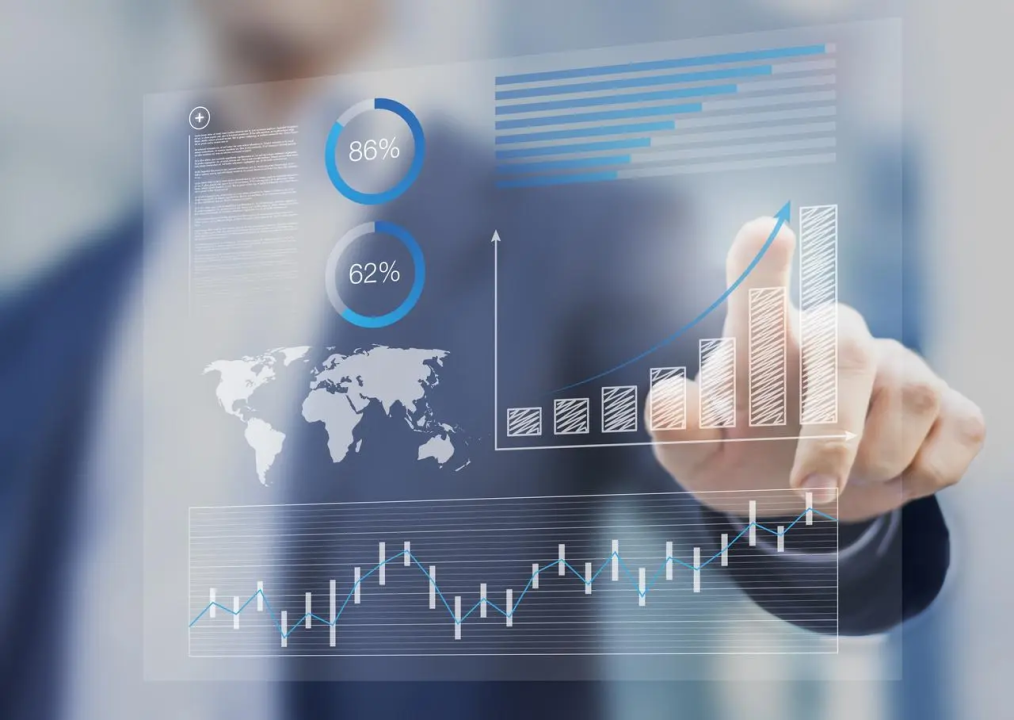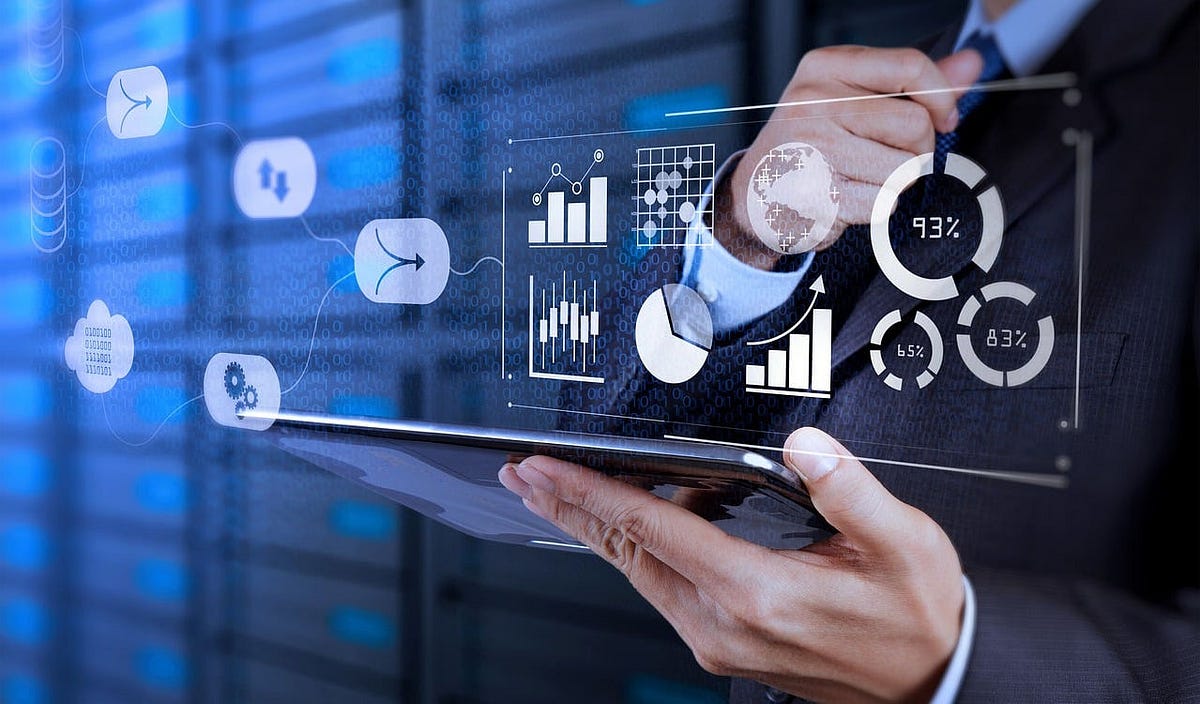Introduction
In today digital economy data is often described as the new. The Role of Data Analytics in Shaping Business Decisions. Oil a resource so powerful that it fuels innovation enhances efficiency and drives growth. But unlike oil data is renewable and continually expanding. This article explores how data analytics empowers. Decision makers the types of analytics businesses use and the opportunities and challenges that come with a data centric approach.
Understanding Data Analytics
What is Data Analytics
Data analytics refers to the process of examining cleaning transforming, and modeling data to extract useful information draw conclusions and support decision making. It combines statistical techniques machine learning and data visualization to uncover patterns and insights.
Key Components of Data Analytics
- Data Collection Gathering raw data from internal sources (e g sales HR operations) and external sources (e g market trends social media).
- Data Processing Cleaning and organizing data to ensure accuracy and consistency.
- Data Analysis Applying analytical models and algorithms to interpret the data.
- Reporting and Visualization Presenting insights using dashboards graphs and visual summaries for decision makers.
Types of Data Analytics in Business

Descriptive Analytics
Answers the question: What happened?
Example Analyzing last quarter sales to identify best performing products.
Diagnostic Analytics
Answers the question: Why did it happen?
Example Investigating why customer churn increased during a specific period.
Predictive Analytics
Answers the question: What will happen?
Example Using historical data to forecast future revenue or market trends.
Prescriptive Analytics
Answers the question: What should we do?
Example Recommending the optimal pricing strategy for a new product launch.
Strategic Role of Data Analytics in Business Decisions
Enhancing Operational Efficiency
Data analytics identifies bottlenecks reduces waste and streamlines operations.
- Supply Chain Optimization Predicting demand to avoid overstocking or stockouts.
- Workforce Productivity Analyzing employee performance data to improve output.
Informed Marketing Strategies
Marketers use analytics to understand consumer behavior and fine-tune campaigns.
- Customer Segmentation Tailoring messages for different demographics.
- Campaign Performance Monitoring KPIs like click through rates and conversion.
Financial Planning and Forecasting
Finance teams use predictive analytics for
- Revenue forecasting
- Budget allocation
- Risk assessment and fraud detection
Customer Relationship Management (CRM)
Analytics helps businesses understand customer journeys.
- Identifying high value customers
- Predicting churn and retention strategies
- Personalizing recommendations
Industry-Specific Applications of Data Analytics
Retail
- Inventory Management Real time data guides reordering and stock levels.
- Pricing Strategy Dynamic pricing based on demand competition and trends.
- Loyalty Programs Behavioral data to create personalized offers.
Healthcare
- Patient Diagnostics Predictive models help in early diagnosis and treatment plans.
- Operational Efficiency Optimizing hospital resources and patient flow.
Finance
- Risk Management Assessing creditworthiness and detecting fraudulent transactions.
- Investment Strategies Analyzing market data for portfolio decisions.
Manufacturing
- Quality Control Detecting defects through machine data analysis.
- Predictive Maintenance Avoiding equipment downtime using sensor data.
Telecommunications
- Network Optimization Analyzing data traffic to prevent outages.
- Customer Experience Using call records and usage data for better support.
Tools and Technologies Powering Data Analytics
Popular Tools
- Microsoft Power BI Interactive dashboards and reporting.
- Tableau Data visualization.
- Google Analytics Web and marketing performance analysis.
- Apache Hadoop Handling large data sets.
- Python & R Programming for statistical analysis and machine learning.
Emerging Technologies
- Artificial Intelligence (AI) and Machine Learning (ML) for automation.
- Cloud Computing for scalable data storage and processing.
- Edge Computing for real-time analytics near data sources.
Benefits of Data-Driven Decision Making
Improved Accuracy
Decisions are based on facts rather than assumptions reducing risks.
Faster Decision-Making
Real-time dashboards and alerts allow businesses to act quickly.
Competitive Advantage
Businesses that leverage analytics outperform competitors in market responsiveness.
Cost Reduction
Analytics identify inefficiencies reducing unnecessary expenses.
Innovation and Agility
New opportunities are identified faster enabling quicker product development and market entry.
Challenges of Implementing Data Analytics

Data Quality Issues
Poor or inconsistent data can lead to flawed analysis and bad decisions.
Integration with Legacy Systems
Combining new analytics platforms with older systems can be technically complex.
Data Privacy and Security
Storing and processing customer data brings regulatory and ethical responsibilities.
Shortage of Skilled Talent
Data scientists analysts and engineers are in high demand with a limited talent pool.
Cost and Scalability
Small businesses may find it challenging to invest in advanced analytics solutions.
Real-World Impact of Data Analytics
Amazon
Uses predictive analytics for personalized shopping experiences and supply chain optimization, significantly boosting sales and efficiency.
Netflix
Analyzes viewer data to recommend content and guide decisions on new original productions.
Starbucks
Uses location based and loyalty data to tailor promotions and select new store locations.
Walmart
Implements real time analytics to manage inventory improve customer service and optimize pricing.
Future of Data Analytics in Business
Integration with AI and Automation
AI will take analytics further with autonomous decision making adaptive algorithms and continuous learning.
Natural Language Processing (NLP)
Will allow executives to query data in plain English making analytics accessible to non technical users.
Data Democratization
More employees will have access to self service analytics tools decentralizing insights.
IoT and Real-Time Analytics
IoT devices will generate vast data streams that when analyzed in real time can transform industries like logistics agriculture and energy.
Ethical and Transparent Analytics
Organizations will prioritize ethical data use fairness in AI models and compliance with laws like GDPR and CCPA.
Best Practices for Businesses Embracing Analytics
Start with a Clear Objective
Don collect data for the sake of it. Define what decisions or problems the data will help solve.
Invest in Quality Data Infrastructure
Adopt scalable secure systems for data collection processing and analysis.
Foster a Data-Driven Culture
Encourage decision makers at all levels to use data and provide training to non technical teams.
Ensure Governance and Compliance
Set clear policies on data access usage privacy and security.
Iterate and Improve
Regularly refine analytics models and strategies based on business outcomes and feedback.
Conclusion
In a world increasingly defined by complexity and change. Data analytics stands as the backbone of strategic business decision making. From streamlining operations to delighting customers from predicting risks to uncovering new markets the intelligent use of data reshapes how businesses compete and grow.
But harnessing the full potential of data analytics requires more than tools it demands vision skilled talent ethical standards and a culture that values evidence over intuition. Companies that succeed in this domain wont just survive the future they lead it.

